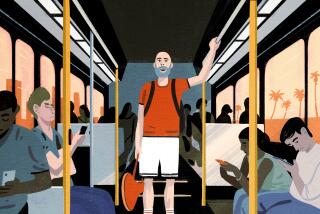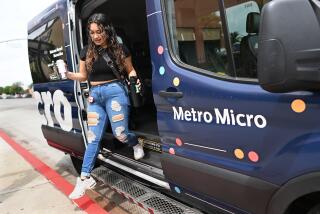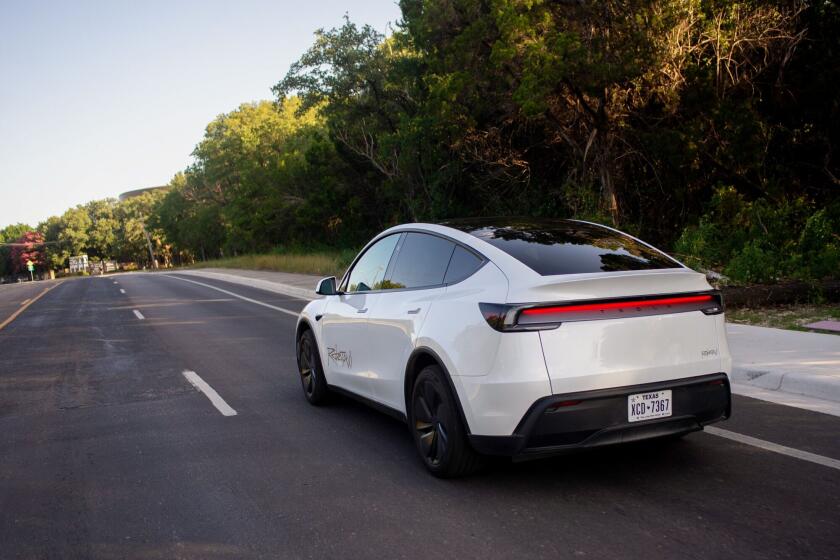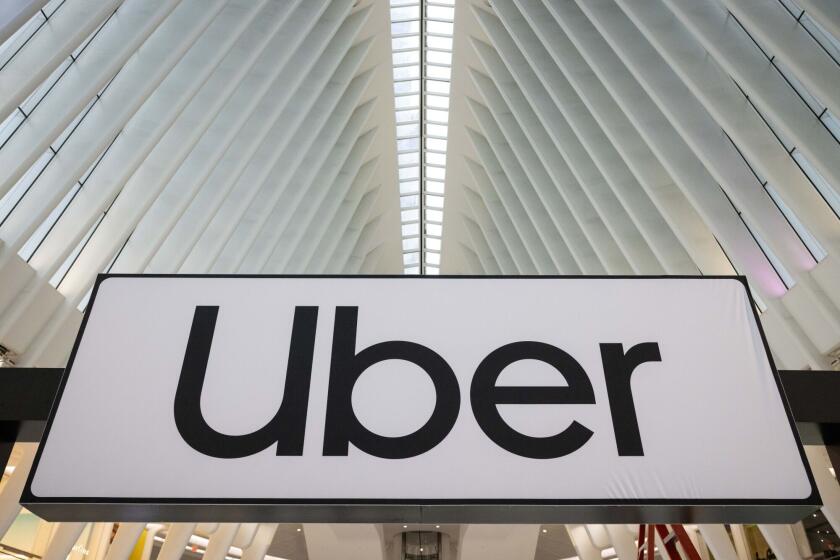Weighing Pluses and Minuses of Using Bus or Air
- Share via
“Take the bus and leave the driving to us.” This legendary, and hugely successful, advertising slogan for Greyhound was aimed at a popular travel choice for millions of Americans.
For decades, taking a bus trip between U.S. cities was a major mode of transportation. For many of us, it still is.
On the surface the statistics seem impressive. Last year an estimated 362 million people traveled more than 1 billion miles on the 25,000 buses running in the United States.
However, only 148 million of those riders were on regularly scheduled intercity bus routes.
Scheduled intercity bus travel has been declining since 1945 with two notable exceptions: 1973-74 and 1979-80 (both national gas shortage periods).
In some cases it’s been easy to discover the reasons for this. One major factor, of course, is airline deregulation and increased air fare competition.
Not a Great Deal
“If you want to compare bus to airline travel,” says Roger Rydell, vice president of Trailways Bus System, “it is certainly not quicker or more comfortable with more amenities. It is purely a price comparison.”
But those favorable comparisons have become few and far between. For example, you can travel round trip from Los Angeles to New York on PeoplExpress for $298 and on Trailways for only $198.
But if you want to travel from Denver to Chicago the lowest bus fare is still $198 on Trailways. That’s not a great deal, because United Airlines offers the same fare. Fares on the Dallas to Atlanta run are $186.20 on Greyhound and $178 on United. And the short round trip between Los Angeles and San Jose can be as low as $58 in the air. It’s $72.20 on Greyhound.
“We tried reducing our fares to compete,” says Terry Underwood, vice president of marketing for Greyhound Bus Lines Inc. “It only worked in rare situations. If you have a choice between a nine-hour bus ride versus an hour and a half plane ride, the fare really won’t matter.”
“The airlines aren’t the primary reason,” says Underwood. “The car is. Ten million new cars were bought last year, and when people buy things they tend to use them.
“The VFR--visiting friends and relatives--and vacation traveler numbers have suffered,” Underwood adds. “We’re watching the long-haul traffic disappear.”
Contributing to that disappearance was deregulation in the bus industry. Since 1935 the Interstate Commerce Commission and other state commissions had tightly controlled the number of bus companies, the routes they could run and their fare structures.
A Dramatic Increase
But after bus deregulation in 1982 the number of bus companies operating in the United States increased dramatically. More than 1,750 began operating in 1984. Many mom and pop bus companies were formed, and most of them offered trips between small towns vacated by major airlines (ironically, as a result of airline deregulation).
Before deregulation the major bus companies were required to continue many unpopular routes. Now much of that service is being discontinued, or being severely curtailed.
“We are in the process of downsizing the company as ridership declines,” says Herb Doherty, a spokesman for Greyhound. “We can’t keep routes running that are losing money. If we step out, a small company will probably step in.”
And Greyhound is helping those companies do just that. In April it entered the franchising market, selling routes to small companies that will use the Greyhound name. Greyhound sets the standards on quality as well as offering driver training and testing, accounting, maintenance services, etc., for an added fee.
Advantages Remain
Although many airline/bus fare comparisons tend to paint a rather gloomy picture for bus travel enthusiasts, taking the bus and leaving the driving to them still has certain distinct advantages.
Last November Greyhound began express shuttle service to five airports, primarily Newark. “We picked up on their (the airlines’) new ridership and made money on it,” says Underwood. Since that time it has expanded the program. It offers direct service from 169 cities to 29 major airports, including, Chicago, Los Angeles, Dallas, Portland, Atlanta, New York and Philadelphia.
And unlimited bus travel programs are definitely a great travel bargain. Greyhound’s Ameripass tickets range from seven days for $189 to 30 days for $349. Trailways offers a 10-day pass for $100, with each additional day costing $10. “This illustrates what we do best that the airlines can’t,” says Trailways’ Rydell. “For example, you can travel to 10 cities in 10 days with any schedule. You can stay overnight or skip a day. This fare illustrates the convenience and flexibility of bus travel.”
Last year nearly 4 million more people took bus charters and tours than in 1983.
And companies like Greyhound, which has a 63% market share of regular route intercity traffic, and Trailways, which operates 1,500 buses, moved quickly into the charter business as a means of survival.
Special Charters
The move to special charters seems to have worked. In 1984 Greyhound did $72 million worth of business. This year it anticipates doing $82 million worth, a 15% increase. And most of the increase is due to charter traffic.
To attract the college market, Greyhound offers a spring break program from Feb. 15 until after Easter, usually a weak period for buses anyway. In most markets a student can buy a pass to anywhere for a flat rate of $79 (in a few markets the cost might be as high as $99). The pass is good for the duration of the spring break.
By combining the low-cost bus travel from small towns with low-cost air fare between cities, the traveler can create an inexpensive vacation. Bus companies are also joining with the rail, cruise and hotel industries to create what are known as intermodel tours. In 1974 the new method of travel began with Greyhound connecting nine of its routes with Amtrak routes.
Members of the military or retired military travel for half price in the United States on Greyhound. With a full fare-paying adult, children 12 and under ride free and children 16 and under for half price on bus lines such as Blue Bird (an Upstate New York line serving the Northeast), which also offers a 10% early bird discount on all tours booked during January through March, their slower months. Both Greyhound and Trailways offer discounts of 10% to seniors over the age of 65.
But don’t expect these discounts to last forever on all routes. With the travel business becoming increasingly fragile, I suggest you book these fares as soon as possible. After all, you wouldn’t want to miss the bus.
More to Read
Sign up for The Wild
We’ll help you find the best places to hike, bike and run, as well as the perfect silent spots for meditation and yoga.
You may occasionally receive promotional content from the Los Angeles Times.






